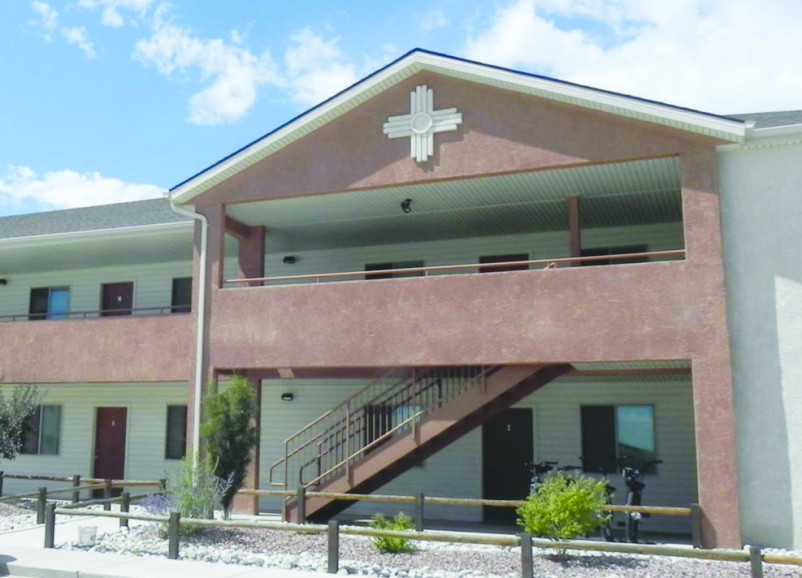Tackling the housing crisis in Alamosa

ALAMOSA – The housing shortage in Alamosa is like the proverbial rock dropped in the middle of a pond. It makes its own initial splash but, almost immediately, ripples emanate in all directions. The bigger the rock, the bigger the ripples and the further they go.
While some in Alamosa may feel secure in the home they own or the apartment they rent, the housing shortage is far from someone else’s problems. The lack of available housing can – and has – impacted multiple area, including local businesses’ ability to expand and the economy’s ability to grow.
“Available housing certainly factors into people’s ability to locate here,” says Kathy Rogers Woods, director of economic development with the city of Alamosa. “It has a trickle-down effect for school enrollment, health care provision, retail sales and so on. Housing is a basic need and likely one of the first considerations people weigh out as they make decisions about relocation.”
Distinctly aware of the ramifications of doing nothing to tackle the shortage, council members and top city staff with the city of Alamosa conducted a comprehensive needs assessment, identifying the causes and scope of the problem plus an equally comprehensive plan.
Prior to the pandemic (when all new home construction basically came to a screeching halt), the city was experiencing a shortage of approximately 441-515 homes – a category that includes single-family dwellings, duplexes, triplexes, apartments and townhomes.
While it’s likely that the need for housing has only accelerated since then, based on that assessment, the city felt setting a goal of 350 new homes over the next five year was feasible. While it may not solve the shortage, 350 new homes would double what has been constructed in recent years, which is a significant increase.
The city is already making significant progress toward that goal.
In 2021, the city has waived building permit fees in support of construction of the Iron Horse apartment complex that, once completed, will ultimately provide 44 living units plus one for the on-site manager.
Located across the street from the Alamosa High School, Iron Horse will offer 1, 2 and 3 bedroom apartments for rent.
The original completion date was targeted for early 2022 but unexpected delays have impeded progress, postponing completion to sometime in the near future.
Since November of 2021, city staff have also been working closely with Community Housing Resources Development Corporation (CHRDC) related to Sierra Vista, a planned housing development that will, over an extended period of time, construct 400 new homes.
Those homes will include single-family houses, townhomes and multi-family dwellings, with houses and townhomes available for purchase. While CHRDC will be responsible, as all developers are, for paving streets, curbs and gutters plus other infrastructure, the city is in the process of applying for a grant funds to help install wastewater infrastructure within the Sierra Vista development as well as the surrounding area.
The wide variety of homes that will be available to rent and/or buy in Sierra Vista will address the varying housing needs present in Alamosa, from those looking for a first time home purchase to those young professionals moving to the area and looking to rent to seniors living on a fixed income.
The SLV Housing Coalition is also in the process of purchasing Boyd School primarily for renovation into apartments with space reserved for other programs. The city has been supportive of that effort by co-writing a grant with SLVHC for $100,000 in pre-development costs from DOLA’s Incentives Grant Program.
In addition to supporting renovation and new construction, city council took action on limiting the numbers and location of Short Term Rentals (STR), in efforts to both support individuals who wish to invest in property for that purpose and visitors to Alamosa who prefer to stay in a short term rental versus a hotel industry that relies on STRs while also preserving existing neighborhoods and limiting the number of houses that STRs remove from the real estate market or can be used for long term rental.
Finally, the city launched an effort to realign zoning codes both to reflect the reality of current usage of property and also to lay the groundwork for future development of both residential and commercial property.
Correction: it was inaccurately reported in the June 28 Valley Courier Housing tab article “Housing in Alamosa: fitting the pieces, seeing the big picture” that the assessment referenced in the story was conducted by the SLV Housing Coalition. The assessment referenced in the story was actually conducted by the city of Alamosa, who chose to conduct one on their own in order to complete it earlier and focus more closely on Alamosa.



